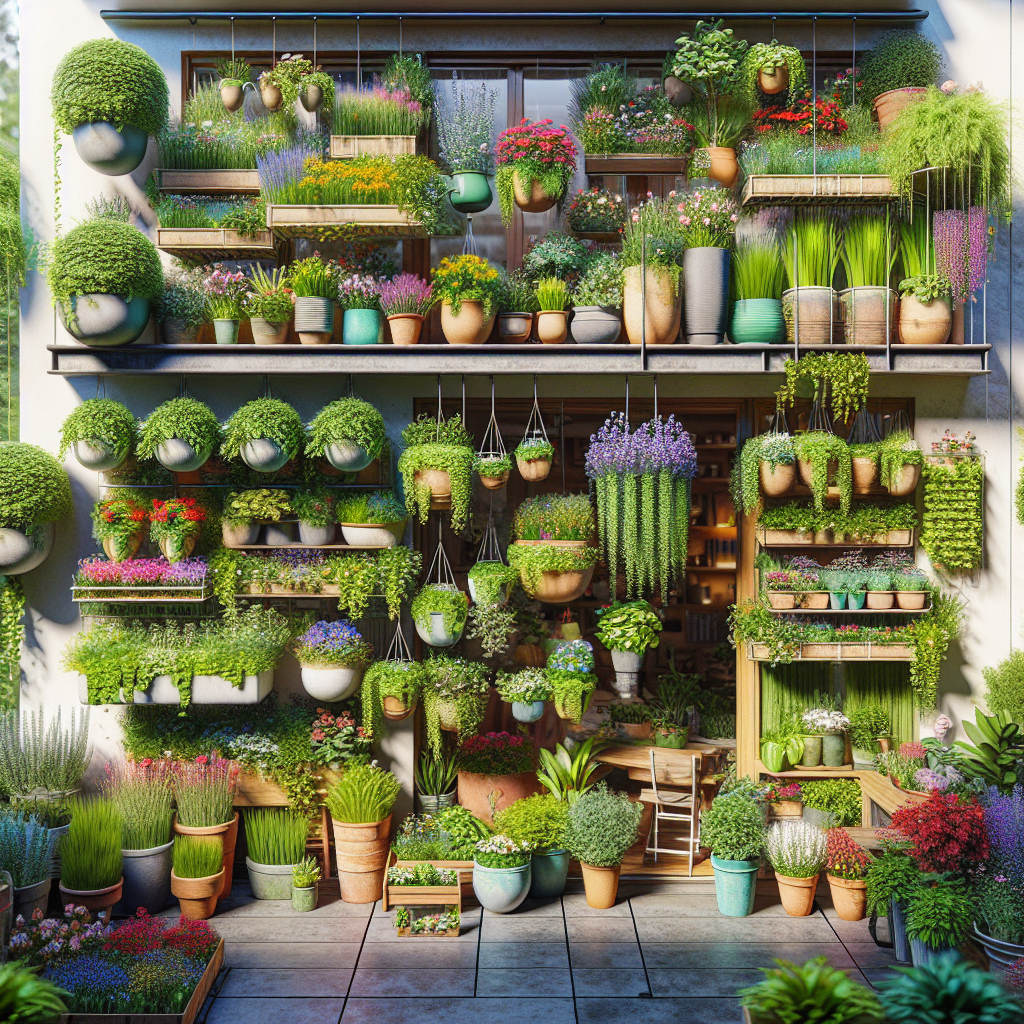Secrets to Thriving Container Gardens for Small Spaces
In an era where urban living spaces are shrinking, and green spaces are becoming a luxury, container gardening has emerged as a savior for those yearning to nurture plants. Container gardens allow city dwellers to transform balconies, rooftops, and even window sills into lush green havens. But cultivating a thriving container garden in small spaces requires knowledge and some insider secrets. Here we reveal the essential tips and tricks to help your container garden flourish.
1. Choosing the Right Containers
The foundation of any successful container garden lies in selecting the right containers. While aesthetics are important, functionality should never be compromised.
- Material Matters: Containers come in various materials such as clay, plastic, metal, and wood. Each has its benefits; terra cotta pots offer breathability whereas plastic pots retain moisture better – crucial for different plant types.
- Size Appropriateness: The size of your container directly impacts plant health. Smaller pots dry out quickly and can restrict root growth. A general rule is to choose containers at least 10-12 inches deep for most vegetables and flowering plants.
- Drainage: Proper drainage prevents root rot. Ensure your containers have one or more holes at the bottom to allow excess water to escape.
2. Selecting the Right Soil Mix
Soil quality is paramount in a confined growing space like a container.
- Potting Mix vs Garden Soil: Never use garden soil alone in containers as it tends to compact over time and can harbor diseases. Opt for a high-quality potting mix that offers good aeration and drainage.
- Enriching the Soil: Incorporate organic matter such as compost or well-rotted manure into your potting mix to enhance nutrient content and improve soil structure.
- pH Balance: Most plants thrive in slightly acidic to neutral pH (6-7). Use a pH meter or test kit annually and amend your soil with lime or sulfur if necessary.
3. Plant Selection
Choosing plants that suit container growth is pivotal.
- Compact Varieties: Many vegetables and flowers have dwarf or bush varieties bred specifically for smaller spaces – think cherry tomatoes instead of heirloom varieties.
- Companion Planting: Some plants grow better together, improving each other’s health and yield. For instance, basil repels pests that affect tomatoes.
- Seasonal Rotation: Rotate crops according to seasonality – cool-season crops like lettuce in spring/fall, heat-loving veggies like peppers during summer.
4. Watering Wisely
Water management is critical:
- Consistent Moisture: Container plants dry out faster than those in the ground due to higher exposure on all sides. Regularly check moisture levels using your finger or a moisture meter.
- Self-Watering Systems: Consider self-watering containers that include reservoirs at the bottom from which water wicks upwards – reducing frequency but ensuring consistency.
- Mulching: Add organic mulch (like straw or bark chips) on top of soil to reduce evaporation rates significantly.
5. Fertilization Techniques
Nutrient replenishment becomes more frequent with restricted soil volume:
- Slow Release Fertilizers: These are mixed into potting soil during planting time; they gradually release nutrients ensuring long-term supply.
- Liquid Fertilizers: Incorporate liquid feeds once every two weeks during active growth phases; they are quickly absorbable by plant roots providing instant nourishment.
6. Optimal Sunlight Exposure
Light requirements must be met:
• Know Your Plant’s Needs:
Some plants thrive under full sunlight while others prefer partial shade – ensure you match your plant selections accordingly with available light conditions on balconies/windowsills etc.,
• Reflective Surfaces:
Use light-colored reflective surfaces around these areas maximizing natural light absorption especially helpful during shorter winter days
• Grow Lights:
In poorly lit apartments invest grow lights offering full spectrum lighting replicating natural daylight extending growing seasons indoors effectively without compromising plant health,
7.Dealing With Pests And Diseases Organically
Urban environments often harbor unique pest challenges requiring vigilant management –
Organic Pesticides/Insecticides:
Neem oil sprays effectively combat common pests like aphids/mites without harmful chemical residues jeopardizing human/animal health,
Companion Plants/Beneficial Insects:
Grow pest-repelling companions (marigold/basil) attract beneficial insects (ladybugs/lacewings) maintaining balanced healthy ecosystem naturally deterring harmful intruders,
Regular Inspections & Pruning :
Routine inspections prompt early detections trimming infected leaves/stems immediately curbing disease spread maintaining overall plant vitality,
8.Pruning And Pinching Techniques :
Encouraging bushier healthier growth
Pruning off dead/damaged foliage promoting airflow minimizing disease risk,
Pinch back terminal buds encouraging lateral branching resulting fuller robust healthier appearance particularly effective vertical growers beans/tomatoes,
9.Utilizing Vertical Space Effectively:
Maximize small spaces adopting vertical gardening techniques
Trellises Stakes Supports
Use trellises/stakes supporting climbers(vines/cucumbers),polytunnels protect tender shoots adverse elements securing optimal growth,
Hanging Baskets/Shelves
Install hanging baskets wall-mounted shelves creating multi-level potted arrangements – ornamental edibles alike thriving compact environments saving floor footprint dramatically increasing yield potential substantially simultaneously enhancing aesthetic appeal considerably,
By incorporating these secrets into practice diligently establishing well-coordinated thriving lush vibrant productive rewarding experience despite spatial constraints initially perceived daunting transforming peaceful green oasis within urban jungle indeed attainable reality achievable cherished greener tomorrow beginning today!













